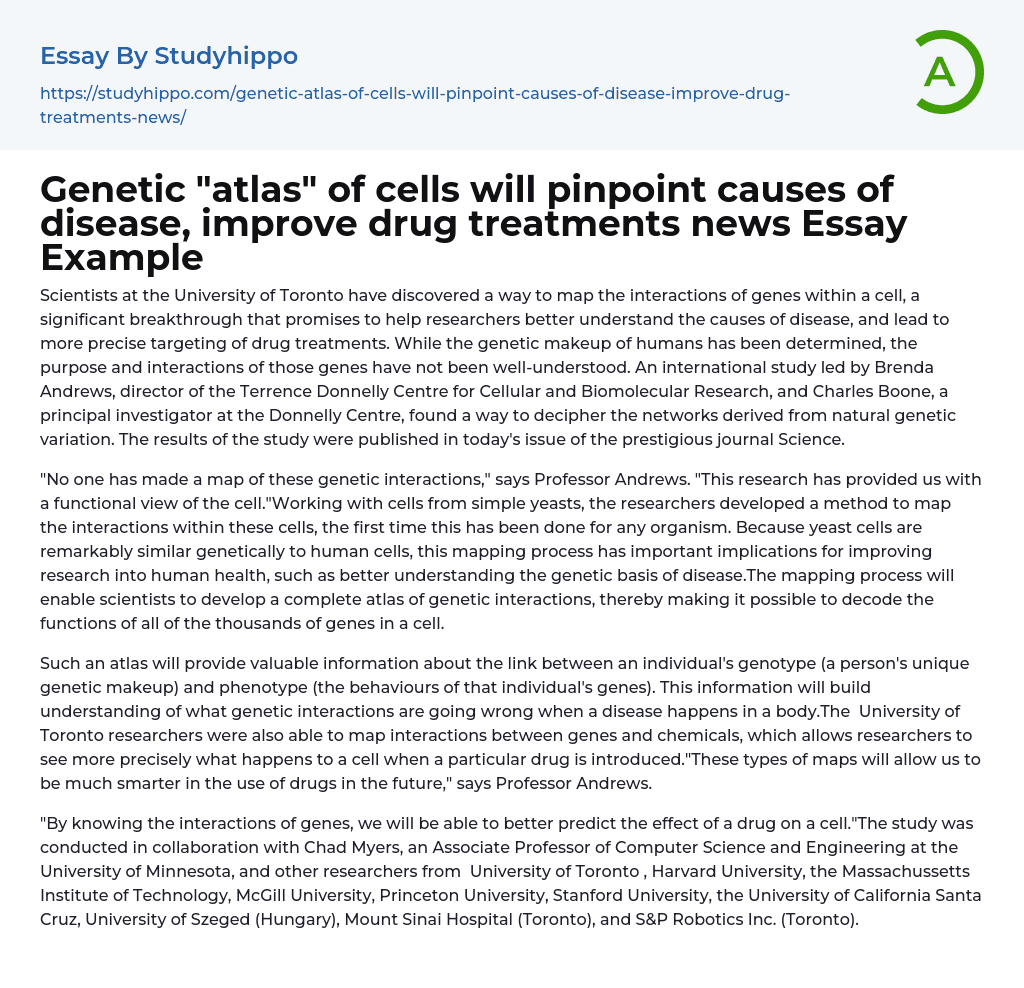

Mapping Gene Interactions in Cells: A Breakthrough for Disease Research
Researchers from the University of Toronto have made a groundbreaking breakthrough in understanding disease origins and enhancing drug targeting. They have developed a method to effectively analyze gene interactions within cells, which was previously challenging. Despite identifying the genetic composition of humans, the functions and interactions between genes have remained elusive. Led by Brenda Andrews, director of the Terrence Donnelly Centre for Cellular and Biomolecular Research, along with Charles Boone, a principal investigator at the same center, an international study has successfully decoded networks formed through natural genetic variation.
The study's results were published in the Science journal today. According to Professor Andrews, this research has created a genetic interaction map that provides a functional perspective of the cell, which is unprecedented. The researchers achieved this milestone by c
...onstructing an extensive atlas of genetic interactions using yeast cells. This accomplishment holds potential significance for advancing human health research, specifically in comprehending the genetic roots of diseases. By unraveling the functions of various genes in cells, scientists can gain valuable insights into how an individual's genotype influences their gene behaviors.
The University of Toronto researchers have made a significant discovery regarding genetic interactions and their impact on diseases. By successfully mapping the connections between genes and chemicals, they have gained a deeper understanding of how specific drugs affect cells. Professor Andrews is confident that these maps will enhance drug usage in the future by enabling more accurate predictions of their effects on cells. The study involved collaboration with esteemed institutions including Harvard University, MIT, and Princeton University.
- Dna essays
- Gene essays
- Accident essays
- Awareness essays
- Benefits of Volunteering essays
- Challenges essays
- Childhood Memories essays
- Decision essays
- Driving essays
- Event essays
- Excellence essays
- Expectations essays
- Failure essays
- Farewell essays
- Flight essays
- Gift essays
- Growing Up essays
- Ignorance essays
- Improve essays
- Incident essays
- Knowledge essays
- Luck essays
- Memories essays
- Mistake essays
- Obstacles essays
- Overcoming Challenges essays
- Party essays
- Peace Corps essays
- Personal Experience essays
- Problems essays
- Sacrifices essays
- Struggle essays
- Success essays
- Trust essays
- Vacation essays
- Visit essays
- Volunteering essays



